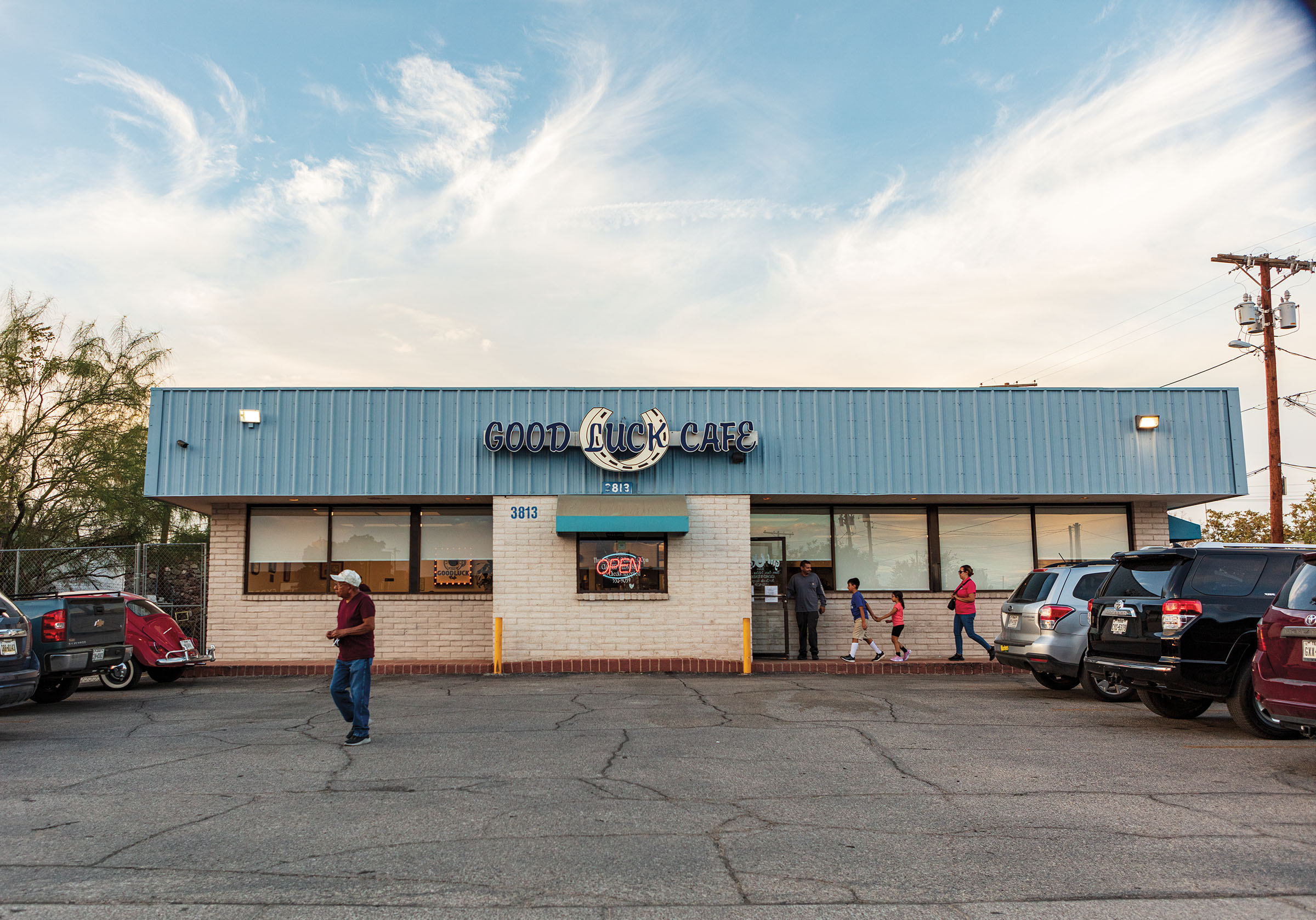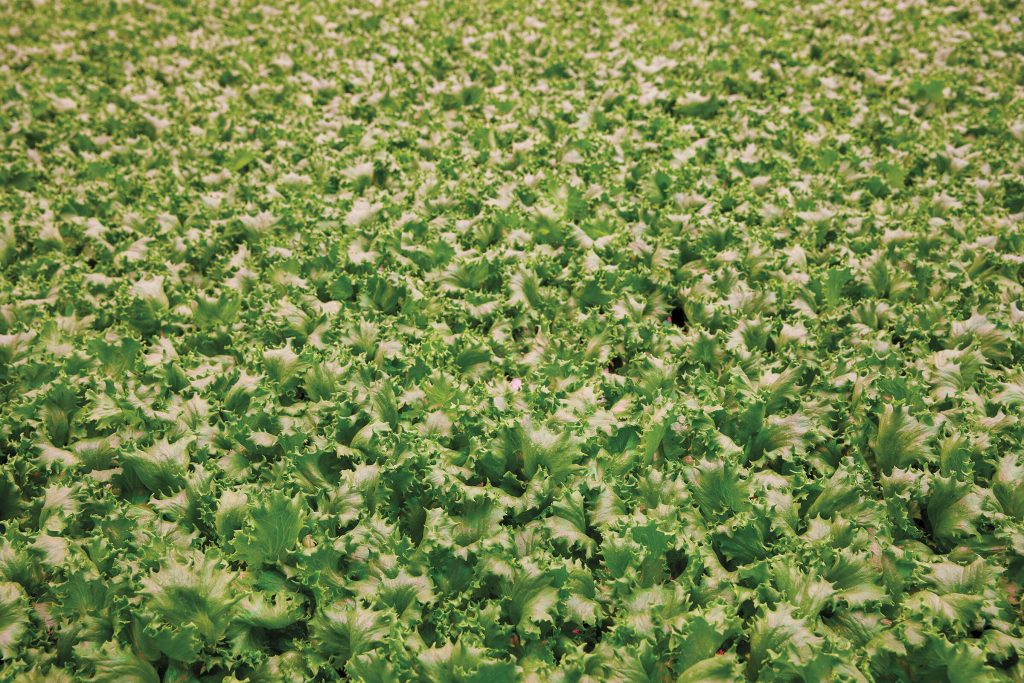Buñuelos
Fried dough fritters coated in cinnamon sugar
Illustrations by Luis Pinto
By Luis G. Rendon
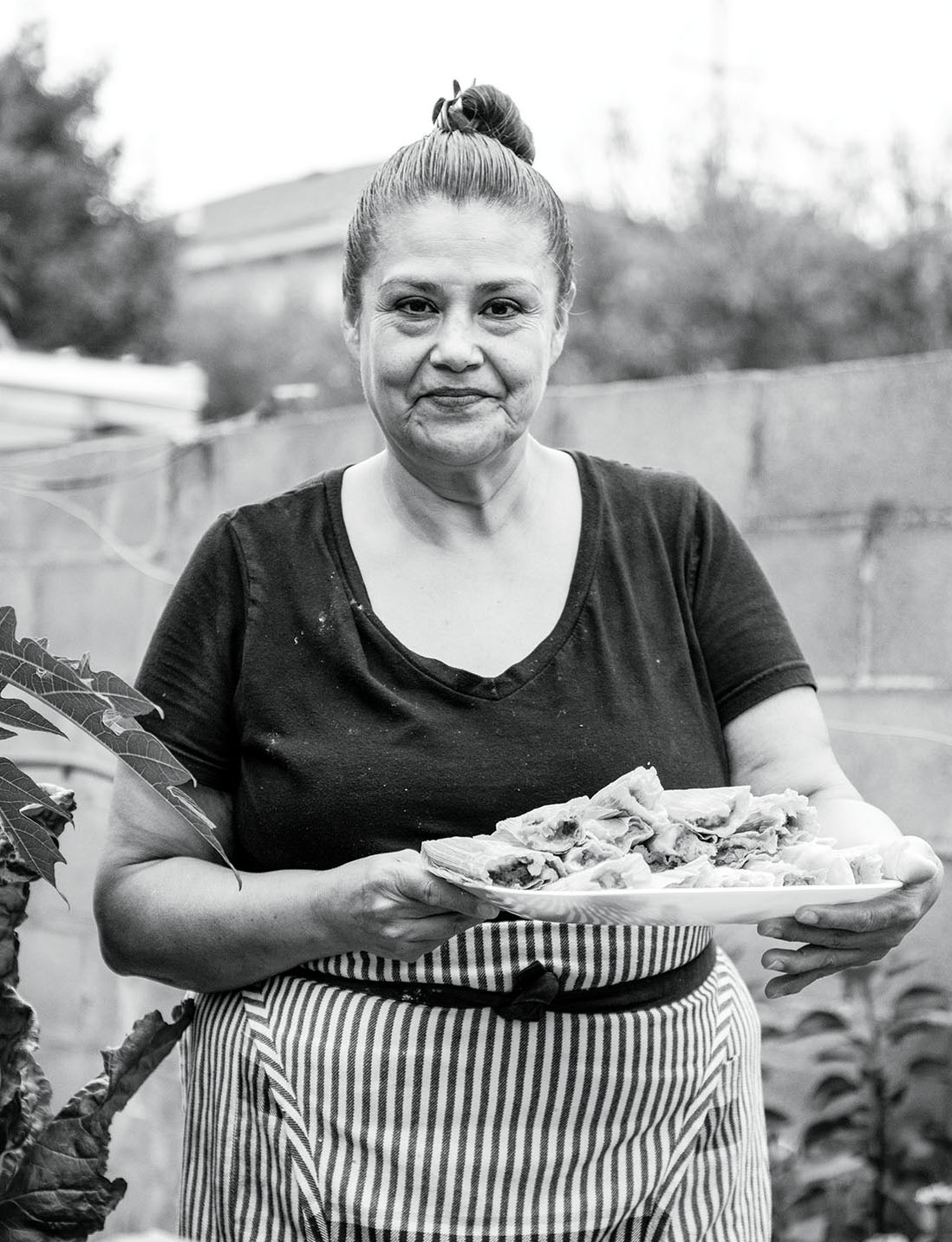
Ring in the holidays with tried-and-true Tejano traditions
Bertha “Emma” Negrete makes tamales for her neighbors in Laredo. Photos by Eric Pohl

My older sister was once the Virgin Mary.
At 7 years old, she had been cast as the mother of Jesus for our hometown of Laredo’s St. Jude Catholic Church posada, the traditional public procession in which parishioners reenact the Nativity story. I remember not understanding what it meant at the time. All I knew was we were playing pretend, and the doll in my sister’s arms was now the baby Jesus.
A couple years later, my sister, much to her chagrin, was demoted to a lowly shepherd like myself. I wandered the street alongside her, singing with neighbors who were also dressed in bed linens. “I was so mad I wasn’t Mary that year,” my sister recalls, still upset to this day.
My memories of “traditional” Mexican Christmases are limited to those early and fleeting moments of my sister marching through Laredo in the early 1990s. Though the Rendon family is puro Mexican American Catholic—and proud of it—Christmas for us mostly meant heading to our grandma’s house on nochebuena, running around with my cousins, and begging the adults to let us open our presents before going to bed. Riots would ensue if my dad didn’t make his menudo, chock full of tripe and hominy. And it wouldn’t be Christmas without someone complaining that we should have bought from a different tamales lady. “Last year’s were better,” someone would inevitably say. “These are all masa!”
I’m a second-generation Tejano, meaning a Mexican American from Texas, with all my family roots firmly planted on the border. Sometimes, though, I feel like a fraud telling people I have Mexican heritage. My experience growing up in South Texas doesn’t fit into the neat box of what folks might think Mexicans should look or sound like. Do I speak Spanish? Not particularly well. Did I play in my high school mariachi? I was first chair violin, baby. Like my parents trying to determine which boxes to check on the U.S. census, navigating my cultural roadmap can be complicated.
In December 2021, I set off to Laredo to write about traditional Tejano and Catholic Christmas traditions—from the posadas of my childhood to the foods my family still indulges in every year. At first, a knot turned in my stomach. I haven’t lived in Texas for almost 10 years. I’ve been chasing a career across the country and missing more Christmases than I’d like to admit. In New York City, where I’ve lived for the past five years, Christmas typically means figuring out which friends can host a potluck and doing a secret Santa gift exchange with family via FaceTime. I’ve struggled with my Mexican identity for years and was nervous to find out what else made me “not Mexican enough.”
I saw an opportunity to rediscover a part of myself that had been ignored for too long. Excited by the challenge—and the added promise of a mountain of tamales—I decamped from Brooklyn and headed south. I’d be home for Christmas.
There is no one way to celebrate a traditional Tejano Christmas. Instead of making tamales at a tamalada with our whole family, the Rendons always just bought ours from a local maker. Luminarias, or handmade paper lanterns, seem to be found more in San Antonio or El Paso. Tejanos can’t even agree on what to call our holiday shortbread cookies. Some know them as pan de polvo, but in Laredo these small sugar-and-cinnamon-covered treats are called hojarascas. The ones my tía Elma made when I was a kid were star-shaped and tasted like Christmas in a cookie. The dusting of sugar left on our fingertips was as close to a white Christmas as we ever got.
When I arrive in Laredo, a border town almost as old as some of these traditions themselves, my parents are not only thrilled I’m home but are ready to help with my immersion. Dad says he can get me in touch with his coworker who is a matachine, a religious Mexican folk dancer typically seen at Christmas celebrations. Mom, meanwhile, has started making calls to local parishes to inquire about their holiday schedules.
Though I’m a week early for Christmas, I’ve already missed the holiday kickoff: El Dia de la Virgen de Guadalupe. Celebrated on Dec. 12, this day is not a tradition my family is entirely familiar with.
La Virgen is an apparition of the Virgin Mary, says Timothy Matovina, a professor who specializes in Latinx religious culture at the University of Notre Dame. On Dec. 9, 1531, she is said to have appeared before a poor Indigenous Mexican man named Juan Diego on the hills outside of Mexico City. “La Virgen is Mexico,” Matovina says.
Often depicted in a red robe and green cloak, surrounded by rays of gold with her hands in prayer, La Virgen instructed Diego to tell the bishop to build a shrine in her honor, but when he did, he was laughed at and ignored. La Virgen refused to let him give up, telling him to gather roses and deliver them to the bishop. Three days later, when Diego presented the flowers, a visage of La Virgen appeared imprinted on his cloak. The miracle led the bishop to concede and accept Diego’s request as a message from God.
La Gran Posada
When: Dec. 18, 2023
Where: San Fernando Cathedral
115 Main Plaza, San
Antonio. 210-227-1297; sfcathedral.org
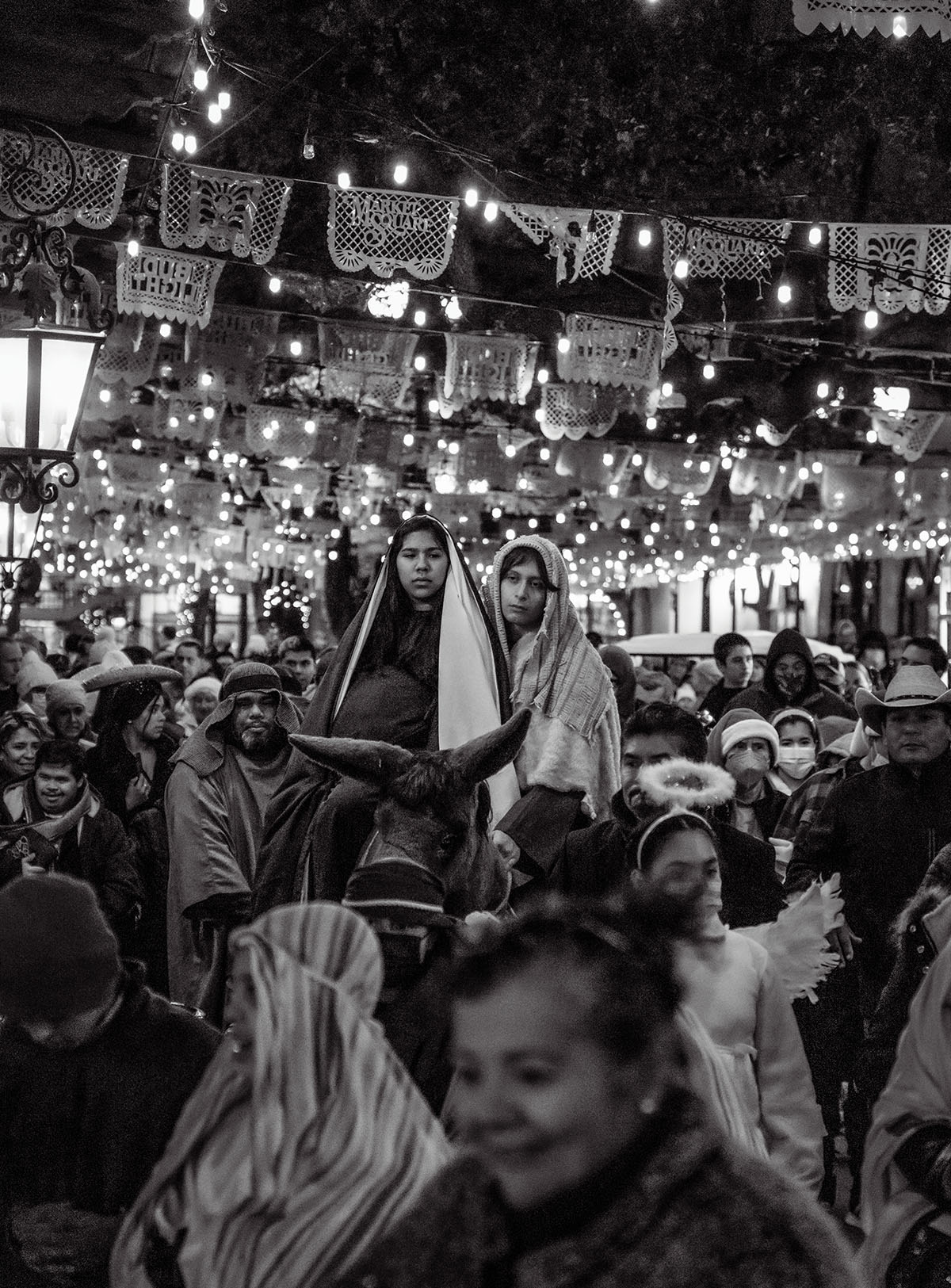
Posada
A religious festival reenacting the Nativity story
Ever since, Catholics have been commemorating that moment as a day of worship and celebration. La Virgen gave Mexicans something to believe in after the brutal conquest from the Spaniards in the 1500s, says Sister Guadalupe Ramirez, a professor at the Mexican American Catholic College in San Antonio. Even as other traditions waver or lose ground among younger generations, the story of Juan Diego continues to resonate with Tejanos and Mexicans today. “It’s the story of someone who, against incredible odds, finds glory,” Matovina says. “The woman, the gay person, the person who’s been put down or told you don’t count as much—that’s Juan Diego.”
Other traditions like posadas, a centuries-old practice thought to have started in colonial Mexico, have been waning for years. When I ask my mom about her Christmases as a kid, she remembers the entire community in Mercedes, where she grew up in the Rio Grande Valley, coming together for the posadas. “There’d be a ton of us,” she says. Historically, posadas, which translates to “inns,” take place for nine consecutive nights, culminating with nochebuena, the “Holy night.” Though often considered a Catholic tradition, posadas are for anyone to partake in. The nights often end with a big party with food and drinks at someone’s home. The tradition can be used to welcome new neighbors to the community. I had hoped to find something similar to my mother’s experience, to finally feel that sense of community I didn’t have as a child. But call after call, I get the same answer from all over town: “We’re not doing anything this year.”
Carlos Renee Ramirez, a catechist with the Diocese of Laredo, remembers the nights when everyone would join the procession of shepherds and angels. Led by men with flashlights, they’d stop traffic escorting Mary and Joseph through the neighborhood. One year, a volunteer whose son was involved in Future Farmers of America even brought a donkey and horse to be part of the procession. “Maaaaan, was that exciting,” Carlos Ramirez says.
But in 2021? “Forget it,” he says. Beyond the logistics of hiring security and obtaining permits from the city, Carlos Ramirez says it’s harder to find people who will commit the time to participate. If they’re held at all, the nine nights are now shortened to three, and walks from a chapel to an annex on church grounds are more typical than neighborhood walks. “It’s sad to see,” he says. “Before there was so much of a richness to it.”
Some of the bigger cities like San Antonio still hold large processions. For decades, the city has hosted La Gran Posada, in which hundreds of people march through downtown. But in smaller towns like Laredo, the resources just aren’t there. As more people move away from their hometowns and neighborhoods grow, traditions inevitably transform. “These traditions aren’t timeless and unchanging,” Matovina says.
Come Christmas Eve, I focus my attention on attending midnight Mass at San Luis Rey Church. While at my tía’s house for our regular festivities, various family members express interest in joining me for Mass. But by the time 11:30 p.m. comes around, that interest has fizzled. My parents don’t get to see my sisters and their grandkids as much as they want, so they choose to spend the rest of the evening with them. The tías, tíos, and cousins similarly decide to play games and catch up with one another.
So, like a scene out of a Hallmark movie if it was airing on Telemundo, I head to the church alone and sit toward the back. I’ve been here before, but never during the holiday season. It’s beautiful, with statues of the Nativity scene placed outside and red and gold lights adorning the entrance.
The Mass begins, and I wait. Even though it’s in Spanish and I’m only catching every third word, surely I will derive some higher meaning from this moment, sitting alone in this pew.
My mind starts to wander, and I remember a conversation I had a few days earlier with Sister Guadalupe Ramirez. So many of the Tex-Mex traditions, she told me, were about the same thing: opening your heart and making an effort. There is a history behind why we do certain things, but the greater question is why do we still do them? Easy, she said. It’s because of love and our need to be around each other.
Tamalada
When friends and generations of family members gather to make tamales
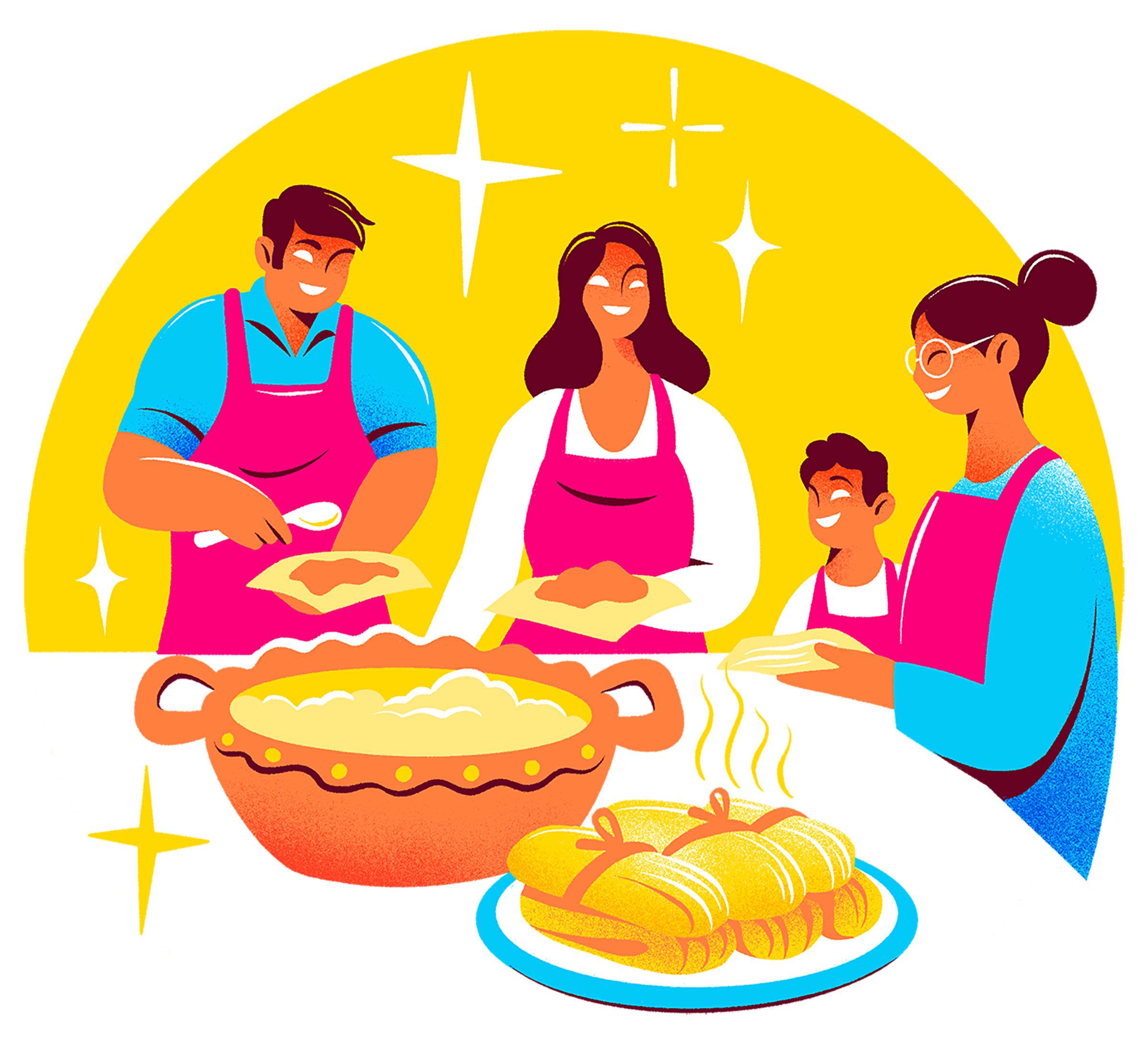
“You’re called to be a light in the world, not a light inside the church—there are enough of those already,” I recall her saying, her words ringing in my ears like gentle sleigh bells.
And like a Christmas miracle, it hits me: participating in posadas or celebrating specific traditions won’t make me more Mexican because there’s no such thing. I have an entire family of people who love me and who I don’t get to see often enough waiting for me at home, eating menudo, opening presents, and enjoying the limited time we have together. Those were my Tejano Christmas traditions, and I was missing them.
As the congregation rises, I sneak out the back door. With my heart open and a clearer vision of myself than I’ve had in a long time, I head home to tell my family Merry Christmas.
The dishes Tejanos eat during the holidays reflect the same cultural values as the rituals and rites: Our favorite Christmas treats are made to share. The five purveyors listed here are carrying on the culinary traditions of a Tejano Christmas.
Mexican Hot Chocolate: Don’t be fooled by Nestlé’s “Abuelita” hot chocolate this holiday season, Dallas-based chocolatier Andrea Pedraza says. “It’s only about 13% cocoa,” she says. “It’s technically not chocolate.”
As one of the top chocolatiers in Texas with nearly 40 years of experience, Pedraza says texture and grain are what define Mexican hot chocolate. Its makeup is attributed to the hand-powered tools Mexican chocolate-makers use, like a metate (mealing stone) or molino (hand crank) as opposed to the industrial machines that refine beans in France and Switzerland.
Mexican hot chocolate and the corn-based champurrado share that traditional grainy texture but are distinct in flavor. The Mexican hot chocolate Pedraza makes at CocoAndré, her shop in Oak Cliff, is a 50/50 blend of Mexican cocoa and either milk or water. “Nothing artificial,” she says. Champurrados have a base of corn, milk, piloncillo (cane sugar), and cinnamon with a hint of chocolate. A third variation, an atole, is like a chocolate-free champurrado, often made with masa.
Since 2009, Andrea and her daughter, Cindy Pedraza, have worked to highlight the flavors and versatility of Mexican chocolate culture. Once it gets cold, Cindy says, customers can’t get enough. “When people drink hot chocolate or champurrado,” she says, “it reminds them of home.”
Tamales: While many families host tamaladas, it’s common practice to buy tamales from a local maker. Laredo’s Bertha “Emma” Negrete has been filling orders for her neighbors since 2011. As she puts it, she just has the sazón, that divine magic that turns tamales from a humble snack into a delicious Christmas dinner.
A light and fluffy corn dough pouch filled with a savory center and individually wrapped into a cornhusk, tamales are handmade wonders. Making them is a time-intensive labor of love that Negrete begins daily at 4 a.m. during the holiday season. By the end of each day, she’ll have made almost a thousand. “Mira,” she says, pausing briefly in her morning marathon of rolling masa to point to her calendar overflowing with orders she must fulfill.
It’s the masa, she says, that makes a great tamal. Negrete’s secret is infusing her dough with chicken stock to make it more flavorful. Negrete’s cooking skills were honed on the streets of Guanajuato, Mexico, when she was only 8 years old. She’d help her mom and tías make and sell food to travelers to make a living.
Still feeling the effects of a recent knee replacement, Negrete gets tired after the long days on her feet but has no intentions of quitting anytime soon. She’ll be making tamales, she says, until she can’t anymore—“It fills me with joy.”
If you can’t find a local tamale maker, Delia’s Tamales accepts online orders at deliastamales.com and ships statewide.
CocoAndré Chocolatier
508 West 7th St., Dallas.
214-941-3030; cocoandre.com
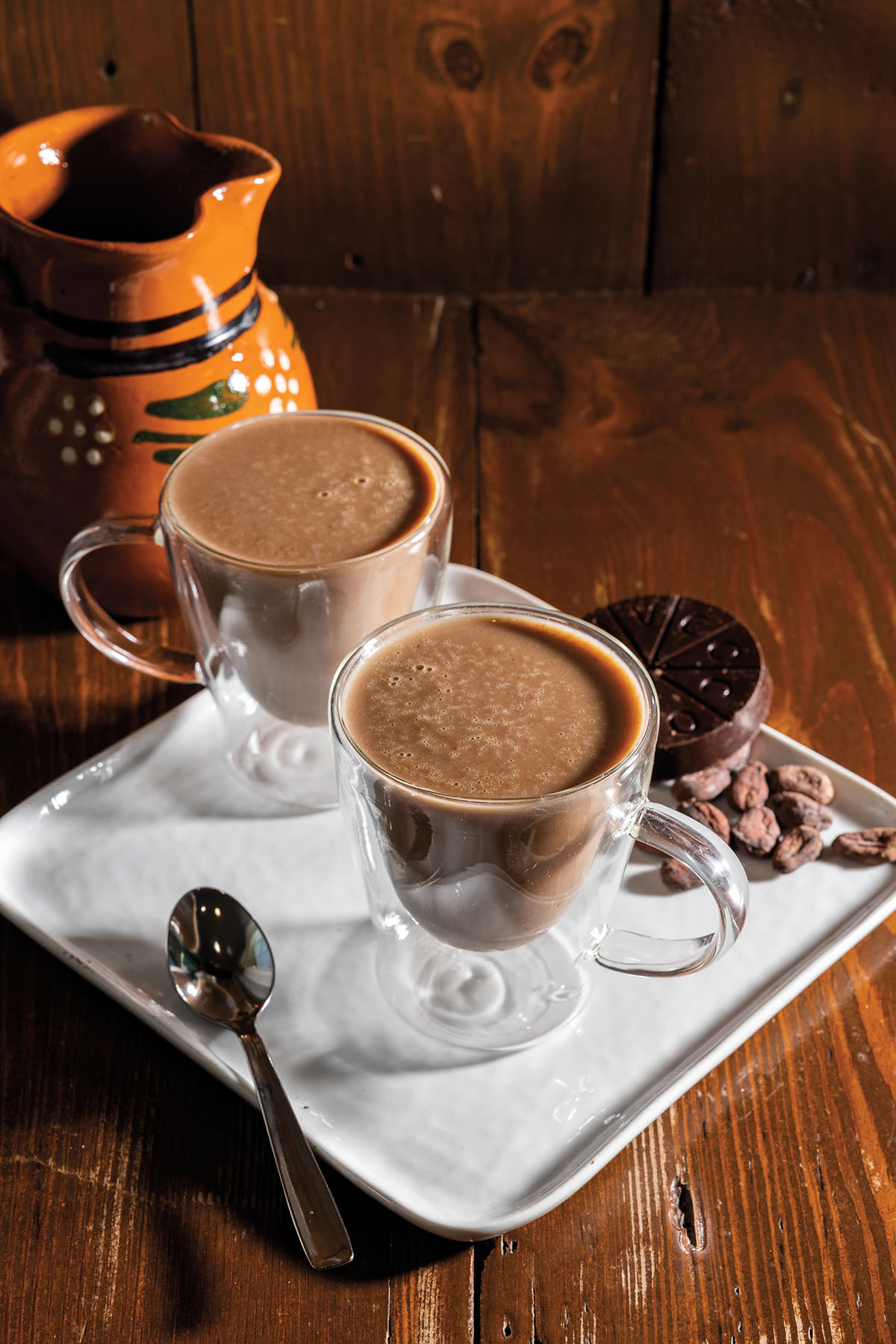
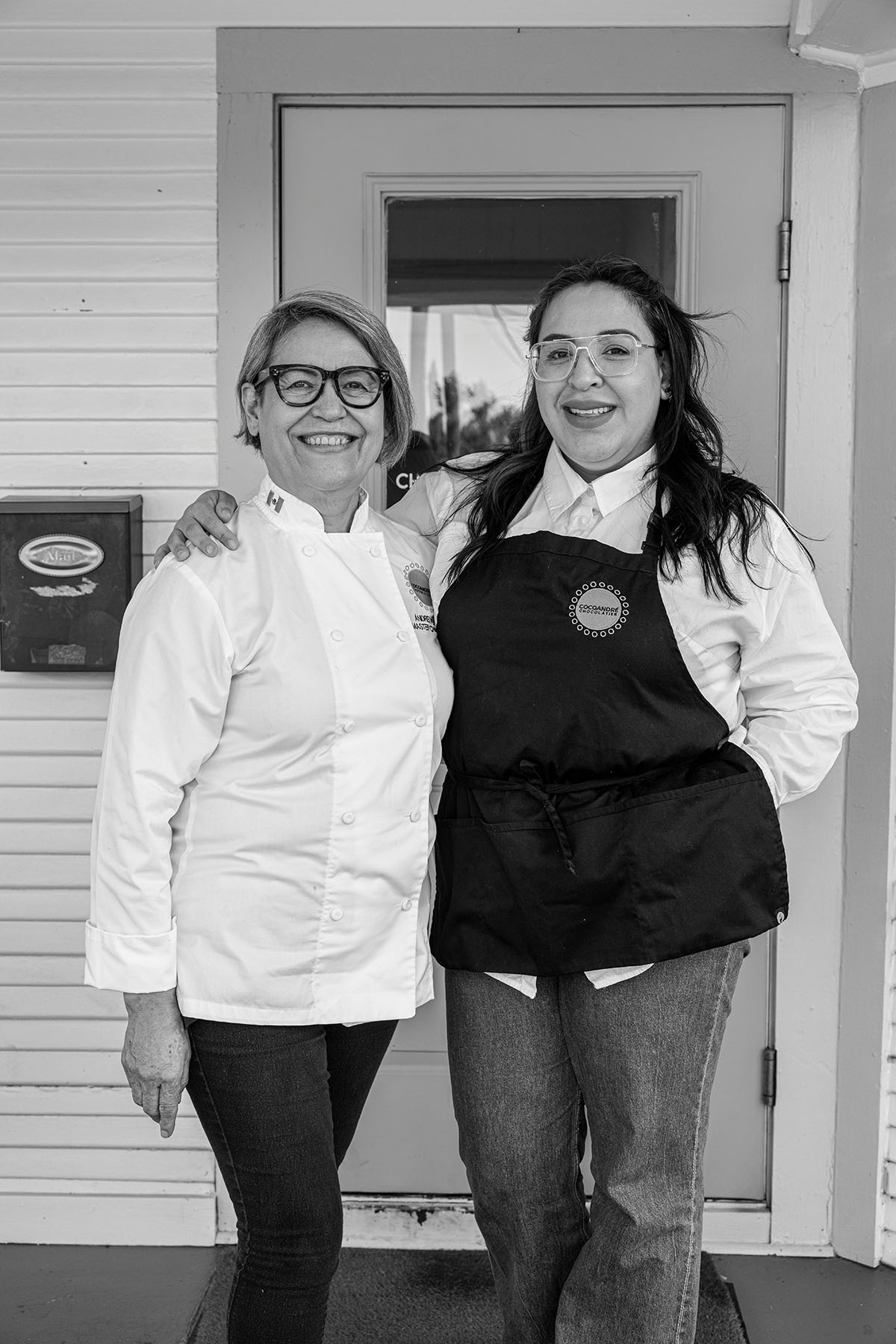
Pan de Polvo
Cinnamon Sugar shortbread cookies that melt in your mouth
Pan de Polvo: Depending on where you grew up, you might call these small cinnamon shortbread sugar cookies pan de polvo, hojarascas, posadas, or something else altogether. But Jason Hernandez, owner of Nani’s Cookies in Edinburg, says the cookies all mean the same thing: Christmas.
Polvo means dust. The cookie earned its name from the way it crumbles in your mouth. These bite-size delights, which can come in shapes including hearts, flowers, and stars, are deceptively difficult to get just right. Hernandez says making the perfect cookie isn’t about following a recipe to a T. “It’s something you’re going to have to learn, and with experience, you’ll just know,” he remembers his mother teaching him.
Hernandez recalls waking up as a child to a house smelling of cinnamon, his mom busy in the kitchen fulfilling orders for friends and family. He uses a version of her recipe to make the miniature delights for his business, which he and his wife have run out of their home for six years.
It’s a lot of work, he says, but satiating the cravings of customers who have their own childhood memories of the sweet treat gives him purpose. “People are depending on this for their traditions,” he says. “I would not feel right letting that recipe and tradition slip away.”
Nani’s Cookies
Available for delivery across the Rio Grande Valley.
956-270-2947; naniscookies.com
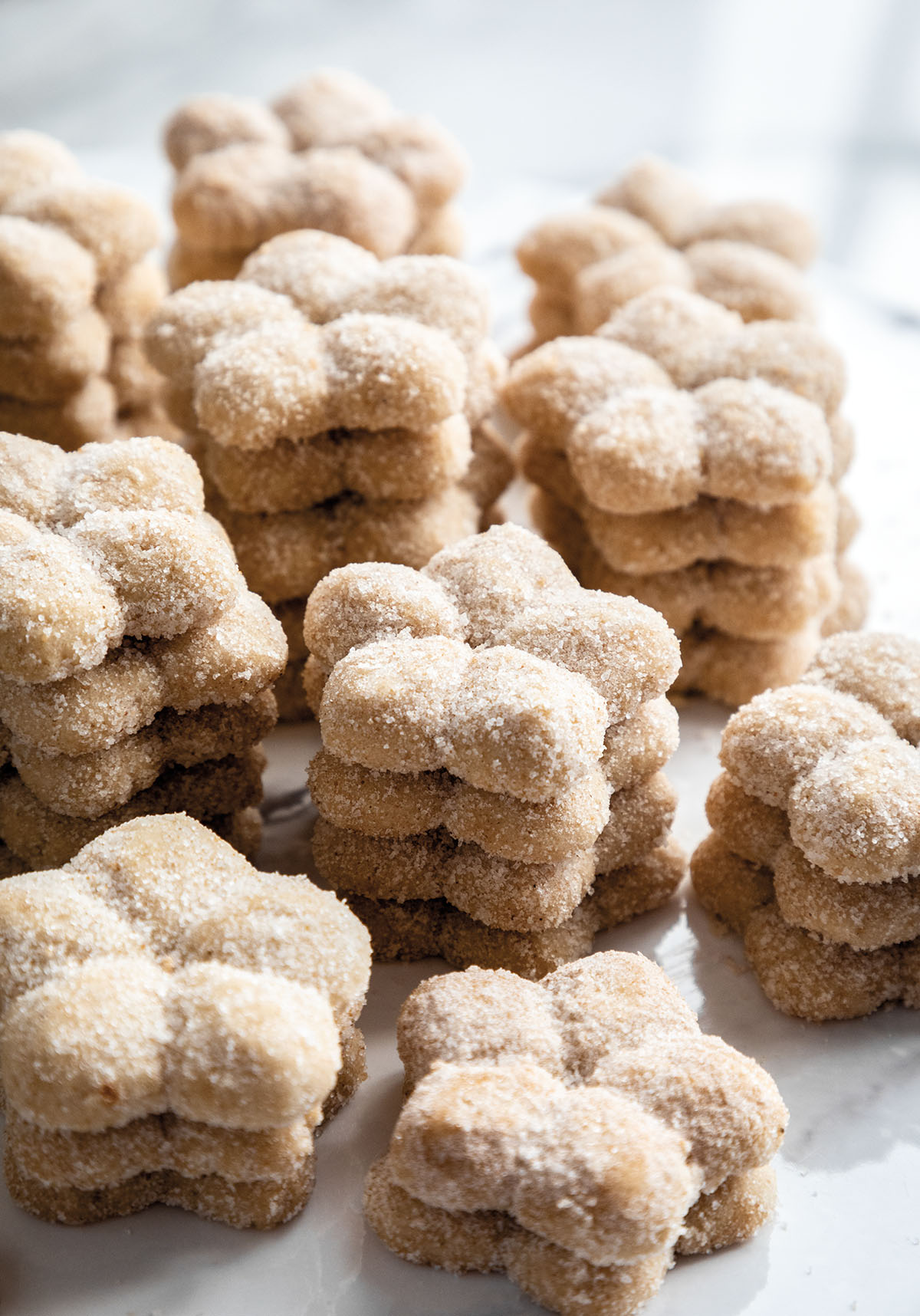
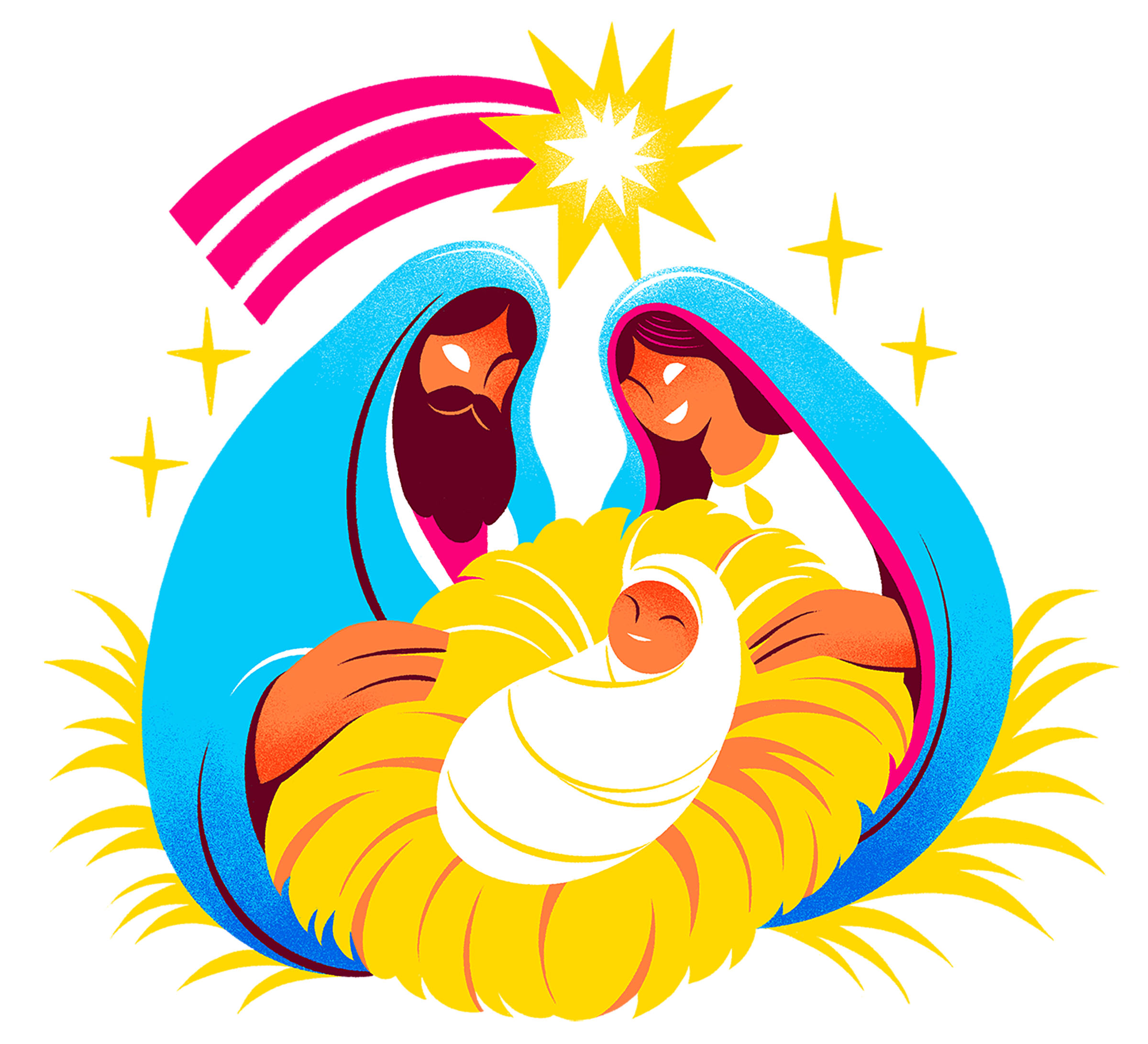
Buñuelos: As a child, Hotel Emma executive sous chef Felicia Perez wouldn’t leave out cookies for Santa Claus on Christmas Eve—she’d offer him buñuelos instead.
She and her cousins would spend the night before Christmas making the flat, fried, cinnamon-sugar-covered fritters with their grandma. It was a way of connecting with the Mexican matriarch of the family who only spoke Spanish, while the kids only spoke English. Rolling and kneading the dough, dropping it into the fryer, and sprinkling the treats with sugar was a daylong process that surpassed language barriers.
While Perez grew up making them for Christmas, buñuelos are often considered a New Year’s tradition in some homes. At the hotel in San Antonio, Perez has made the traditional treat a part of an experience where guests can sign up to learn about the dessert and enjoy it as a holiday snack.
In October 2020, Perez’s grandmother died after contracting COVID-19. This year marks the family’s third Christmas without her. Perez’s grandmother used to use an orange peel and nutmeg in her dough. As a nod to her recipe, Perez garnishes her own buñuelos with a zest of citrus and nutmeg.
“Doing this is extra special because it really is keeping that tradition alive,” she says. “When the holidays roll around it’s about family and bringing people together. And the best way to do that is through food.”
hotel emma at pearl
136 E. Grayson St., San Antonio.
844-845-7384; thehotelemma.com
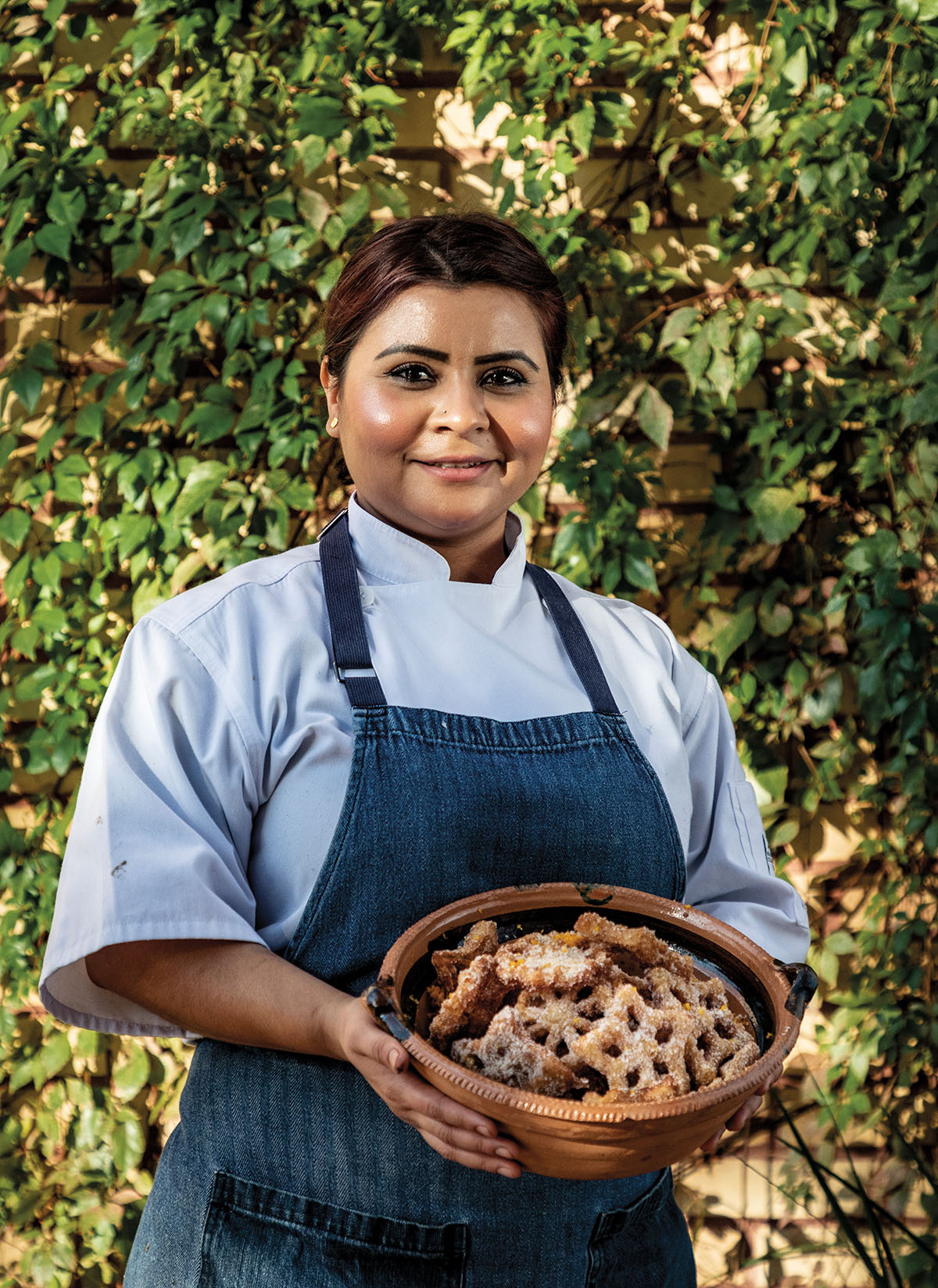
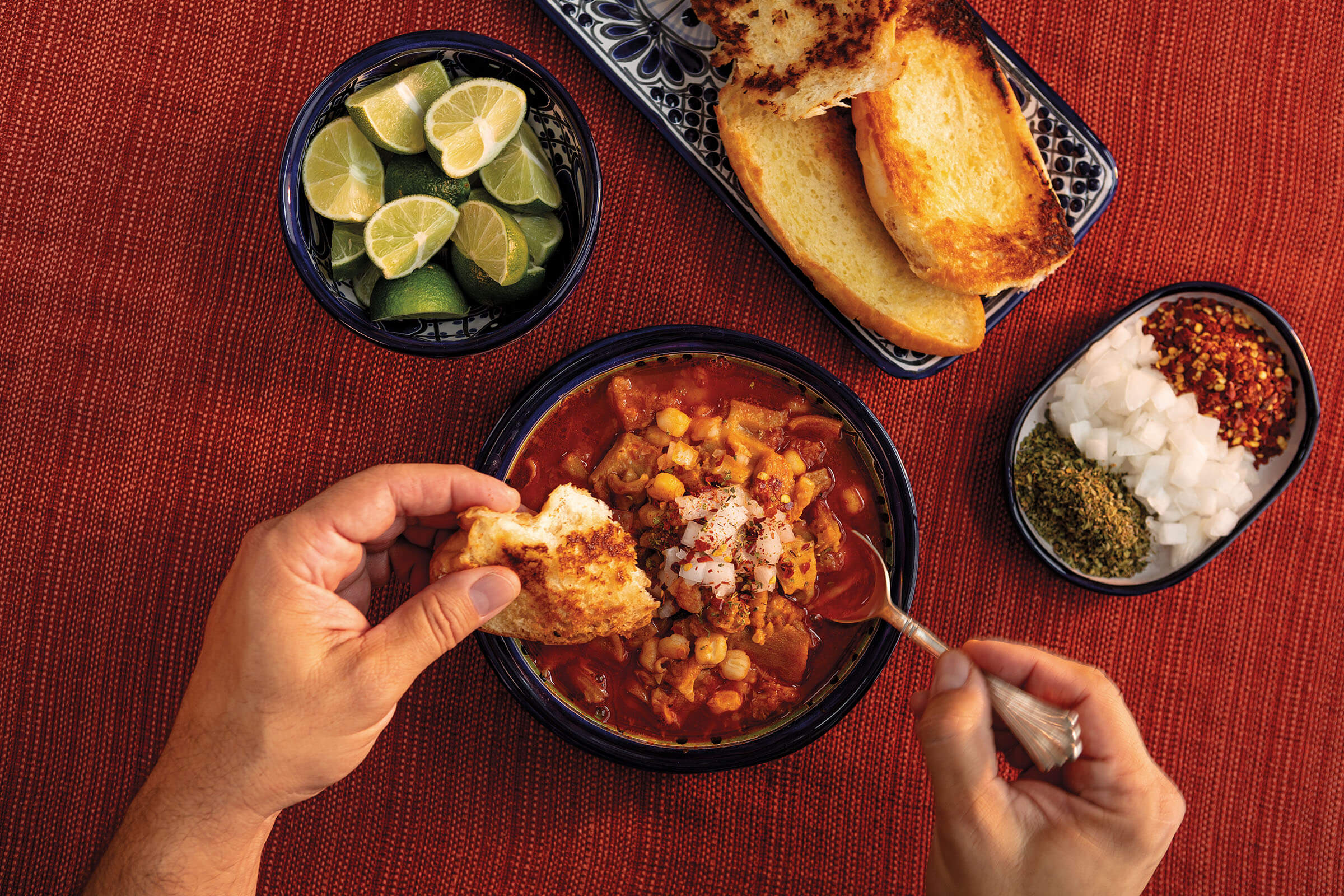
good luck cafe
3813 Alameda Ave., El Paso.
915-532-9039; goodluckcafe.net
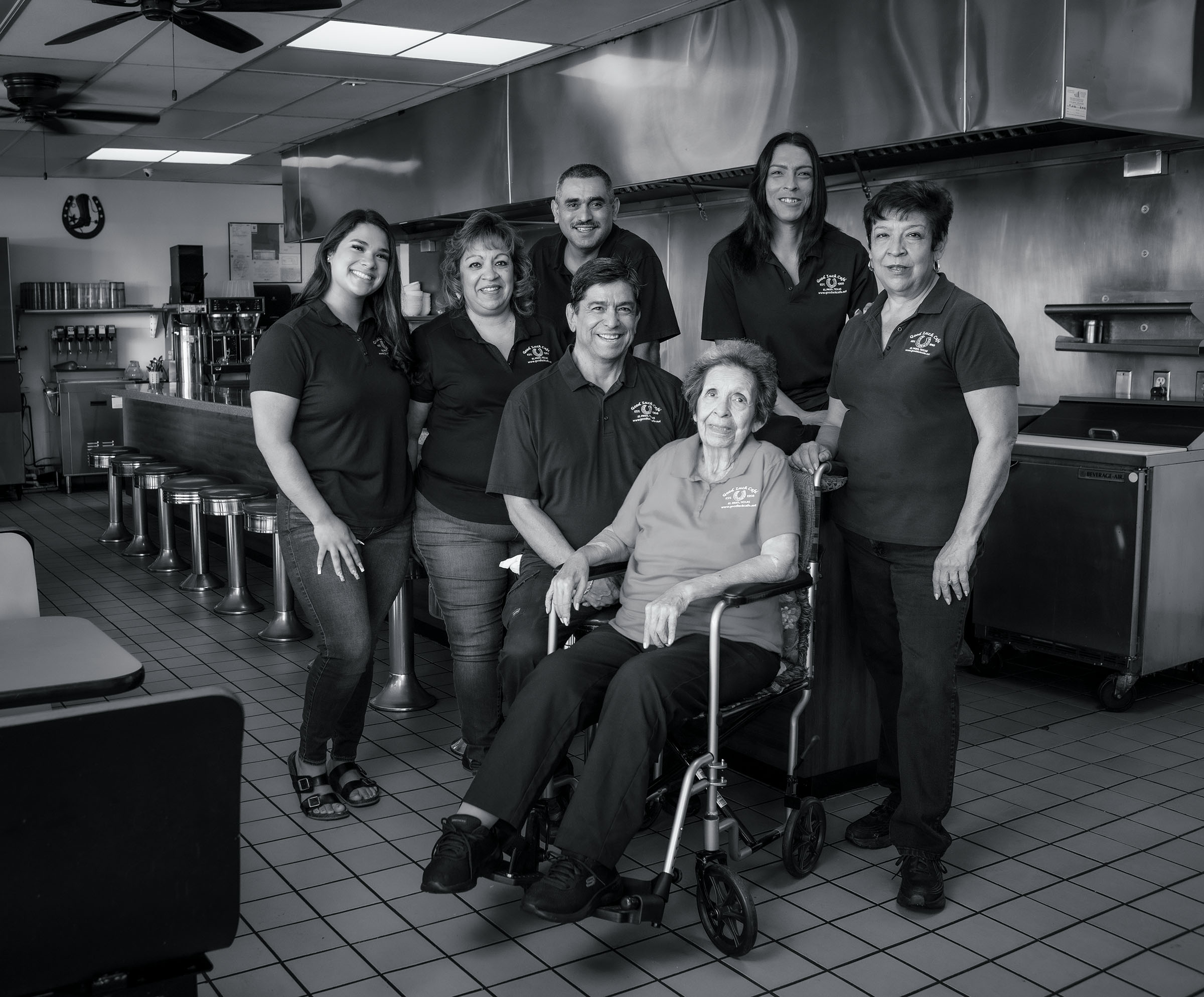

menudo: There’s an old wives’ tale that explains menudo’s enduring popularity, though some folks might cringe at the ingredient list. “Once you tell people it’s cow stomach they go, ‘Blegh,’” says Ruben Puentes, whose family owns Good Luck Cafe in El Paso. “But it’s supposed to be a hangover cure.”
Families across Texas have come to expect the savory Mexican soup after a late night of celebration, whether after a quinceañera, a wedding, or Christmas. “It’s our comfort food,” Puentes says.
Opened in 1968 by Puentes’ father, Joe Ruben Puentes, Good Luck Cafe has been treating hangovers from the start. Though menudo is a mainstay year-round, during the holidays customers typically come by with their own containers to fill for their posadas and parties.
Good Luck Cafe’s menudo recipe is top secret, but the basics are simple: cow stomach (tripe), water, chiles, hominy, onions, garlic, salt, a good four or five hours to simmer, and lime to top it off. And the chile can’t be powdered. “We went to one place and my mom could tell they were using powdered chile,” Puentes says. “All the ingredients have to be from scratch.” It’s his mom’s tough standards that Puentes strives to meet with every bowl.
“I sure do take pride in our menudo,” he says.
